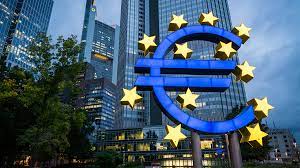© 2020 All rights reserved to Maaal Newspaper
Publisher: Maaal International Media Company
License: 465734
Markets raise bets on September rate hike after first inflation data
The first set of inflation data from the euro zone drove bond yields higher and led money markets to price in a chance of around 60% of a European Central Bank rate hike in September, Reuters reported.
Investors still await pan-German data later in the session and figures from Italy, France and the euro area on Thursday.
German states of Nort Rhine-Westphalia (NRW), Hesse, Bavaria, Brandenburg and Saxony released data this morning. Aggregate figures are due at 1200 GMT.
Spain’s consumer prices rose to 2.6%, while core inflation fell to 6.1% from 6.2% in July.
“Data from German states were a bit hotter than expected,” said Benjamin Schroeder, senior rates strategist at ING.
“At the moment, inflation figures support the case for the hawks who are pushing for a rate hike in September,” he added.
Some analysts expect that the ECB won’t take action in September, pausing the tightening cycle with the deposit facility rate at the current level of 3.75%.
Money markets raised their bets on a rate increase after the North Rhine-Westphalia (NRW) data early in the session, pricing in a 58% chance of a 25 basis points (bps) hike in September , from 50% the day before.
They also nudged up expectations for where the ECB rate will peak by the end of the year, to 3.98% from 3.95% on Tuesday.
Robert Holzmann, seen as a hawk on the ECB’s governing council, said on Monday he saw a case for raising rates further at the next policy meeting if there are no big surprises in inflation data before then.
Euro zone economic sentiment was weaker than expected in August, continuing a steady decline since the start of the year.
Germany’s 10-year government bond yield, the euro area’s benchmark, rose 6 bps to 2.57%, still in the middle of its recent range.
According to Citi analysts, “Bund technical suggest that a breakout might be imminent, but don’t say anything about the direction of the next move.”
Germany’s 2-year yields, most sensitive to changes in policy rates, was up 4 bps at 3.60%.
Investors also await crucial data from the U.S. after a fall in U.S. job openings drove yields lower on both sides of the Atlantic on Tuesday.
Initial jobless claims data is due on Thursday, while non-farm payrolls will be released on Friday.
Italy’s 10-year government bond yields, the benchmark for the euro area’s periphery, rose 7 bps to 4.22%.
The spread between Italian and German 10-year yields – a gauge of investor sentiment towards the euro zone’s more indebted countries – was at 165 bps after trading between 158 bps and 180 bps during the summer.
Related







